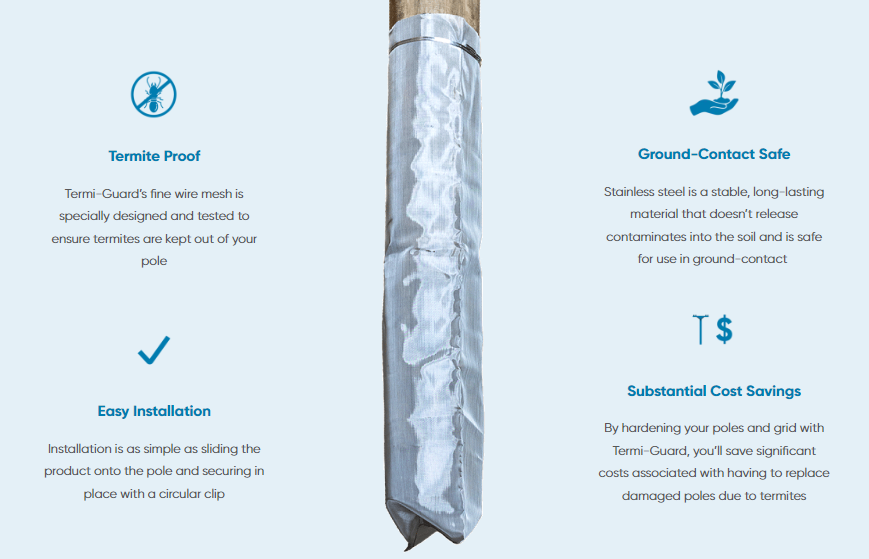In the realm of infrastructure development, wooden utility poles are renowned for their sustainability, cost-effectiveness, and versatility, yet it is the concrete and composite pole market which looks set for stratospheric growth over the next ten years. Read on to discover how the future can be bright for wooden utility poles.

The telecom industry has grown at a rapid rate, this is set to expand further with the growth of 5G networks in both developed and developing nations. A robust infrastructure is required to meet the demands of these upcoming projects to guarantee widespread coverage. This surge in demand for infrastructure extends to utility poles, which play a critical role in telecommunication networks worldwide. Additionally, the escalating adoption of electronic devices and technological advancements further boosts the telecom sector, thereby driving growth in the utility poles market.
Simultaneously, the global energy demand continues to rise, prompting electricity providers to expand their generation capabilities. Consequently, there is a heightened need for utility pole installations to support the expanding electricity grid.
While wooden poles dominated the market in 2021, there is a growing necessity for their replacement due to various decay issues over time. This has led to an increasing trend towards the adoption of composite materials, which are anticipated to witness growth in response to these challenges.
Building confidence in the use of wood through correct treatments and cost-effective protection is essential for ensuring the future of wood in the global pole market.
As a renewable resource, sustainably sourced wood can be replenished naturally over time, giving it a huge environmental edge. The ability of wood to absorb and retain carbon further enhances its environmental credentials compared to the production costs of alternative materials. Additionally, wood processing and treatment methods are generally less energy-intensive, resulting in lower carbon emissions and reduced environmental impact throughout the manufacturing process. By supporting certified sustainable forestry initiatives, the use of wooden utility poles encourages the conservation and sustainable management of forested landscapes.
Across our diverse world, landscapes vary greatly, with some regions experiencing high humidity levels, while others contend with persistent pest invasions, such as termite infestations. In such environments, wood can deteriorate rapidly, posing challenges for utility pole installations. However, this need not be a barrier to using wood effectively. Polesaver provides a range of affordable and eco-friendly solutions designed to shield vulnerable sections of poles, ensuring their suitability for deployment in any environment. By fortifying critical areas, Polesaver products maximise the lifespan of utility pole assets, offering long-lasting protection and peace of mind to all installations.
Polesaver Sleeves ensure total protection against ground-line decay in wooden utility poles. A tested & proven solution to hardening and strengthening the grid, used by utility companies worldwide

Polesaver Termi-Guard™ is a marine-grade, stainless steel mesh sock that protects the subterranean section of a wooden utility pole against termite attack

The utility pole market is evolving rapidly, with an increasing emphasis on sustainability and performance. While the concrete and composite pole market may be experiencing unprecedented growth, the future remains bright for wooden utility poles. As we navigate the evolving landscape of infrastructure development and environmental sustainability, it is imperative to recognise the inherent advantages of wood and take proactive steps to ensure its continued relevance in the global pole market.
By promoting the environmental benefits of wood, implementing effective wood treatment methods, and utilising protective solutions like those offered by Polesaver, we can overcome these challenges and maximise the lifespan of wooden utility poles. Through sustainable forestry practices, innovative treatment technologies, and proactive preservation measures, we can ensure that wood retains its market share and remains a viable option for utility pole installations worldwide.
Please get in touch for more information using the details on our contact page.



This site is protected by reCAPTCHA and the Google Privacy Policy and Terms of Service apply.